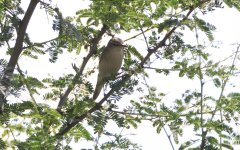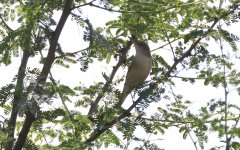sbiswas.geo
Well-known member
I know it is a tough ask, but is there any possibility that this could be a Large-billed Reed Warbler, and not a Blyth's? It was foraging rather openly at mid-level on an Acacia (usually, the wintering Blyth's here keep themselves within bushes and undergrowths) and the bill looked larger than typical. Taken just a week ago. I do not have any more photos and I did not see it fanning its tail.









